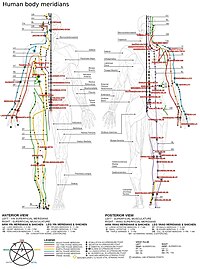
Photo from wikipedia
Abstract The Paleoproterozoic khondalite series rocks were widely distributed along the Jiao-Liao-Ji Belt (JLJB), North China Craton (NCC). Metamorphic investigations on these rocks can definitely shed light on the tectonic… Click to show full abstract
Abstract The Paleoproterozoic khondalite series rocks were widely distributed along the Jiao-Liao-Ji Belt (JLJB), North China Craton (NCC). Metamorphic investigations on these rocks can definitely shed light on the tectonic evolution of the JLJB and provide some clues for Paleoproterozoic history of the NCC. Here we present a comprehensive metamorphic study of high-pressure (HP) pelitic granulites from the Jiaobei terrane in the southern part of the JLJB and combine microstructure, mineral chemistry, Raman spectroscopy, thermobarometry, and P-T-X pseudosections in NCKFMASHTO to trace the metamorphic evolution of these rocks. Staurolite inclusion in kyanite was firstly reported using Raman spectroscopy and four successive mineral assemblages (M1–M4) were identified. Integrated method of thermobarometry and pseudosection modeling constrains P-T conditions of 6–8 kbar at below 660 °C, 15–16.6 kbar at 850–860 °C, 8.8–10.5 kbar at 830–870 °C, 5.8–7.8 kbar at 660–700 °C, for M1–M4, respectively. By employing the melt-reintegrated method, a prograde P-T trajectory is evaluated and hence a complete P-T path is defined that involves a prograde trajectory with marked increase both in pressure and temperature to peak metamorphism, followed by isothermal decompression and subsequent near-isobaric cooling. Such a P-T path implies that a subduction process before collision followed by subsequent extension and cooling processes, was involved in the formation the JLJB, consistent with an orogenic event. Available geochronological data suggests that HP granulites-facies metamorphism probably initiated at 1.90–1.95 Ga and that exhumation and cooling of the metamorphic terrane occurred at 1.80–1.85 Ga, indicating a long-lived hot orogeny during Paleoproterozoic. This contribution provides mineralogical evidence for low-pressure prograde metamorphism in HP pelitic granulites and hence gives a complete P-T path, placing a more rigorous metamorphic constraint on evolution of the JLJB.
Journal Title: Journal of Asian Earth Sciences
Year Published: 2017
Link to full text (if available)
Share on Social Media: Sign Up to like & get
recommendations!